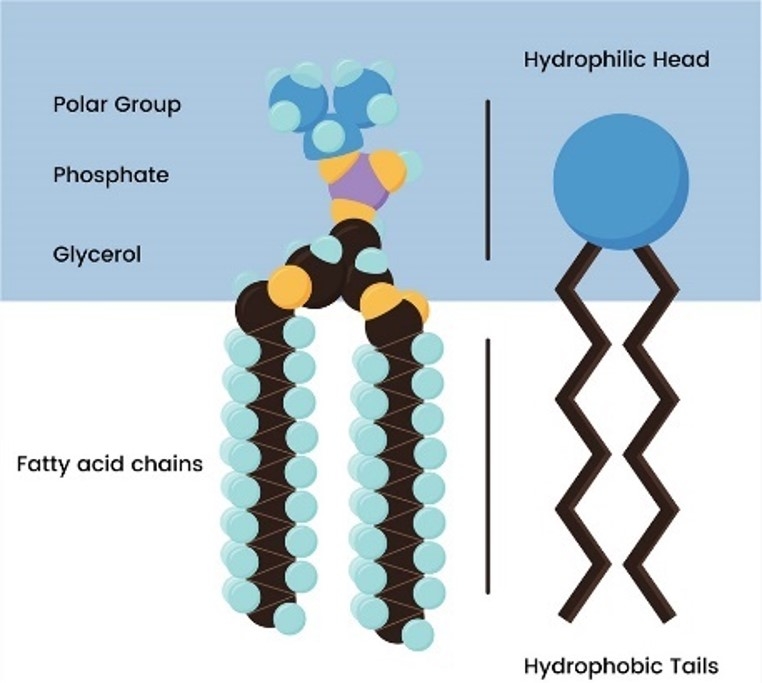The development of drug delivery systems allows for a significant improvement of the efficiency of drug applications. Today, many ready-made drug forms based on different delivery systems have been introduced into medicine. Among them, phospholipid-based carriers have received great attention because of their high biocompatibility and ability to encapsulate a large number of pharmaceuticals inside the vesicle. Therefore, these drug formulations are highly popular in the pharmaceutical market and are much in demand in the drug market
Phospholipids (PLs) are highly specialized lipids that are major constituents of cellular membranes of all variety of living organisms and play a crucial role in the biochemistry and physiology of the cell. As an amphipathic molecule, PL possesses a positively charged headgroup and two neutrally charged tail groups. This is a rare molecular characteristic that renders PLs miscible in both water and lipid environments, in which the oxygen atoms of the phosphate group have a strong tendency to obtain electrons, while the nitrogen atoms have a strong tendency to lose electrons. In addition, any kind of drug possessing an active hydrogen atom (−COOH, −OH, −NH2, −NH−, =NH, etc.) can be esterified (with or without spacer chain) to the hydroxyl group of a PLs molecule, generating an amphiphilic agent to facilitate the crossing of the cell membrane barrier. Therefore, PLs is considered to be an extremely attractive delivery vehicle. For example, the building material of some nanoparticles can be used in certain drug molecules to enhance absorption across lipid-rich biological barriers and increase drug efficacy, thereby improving therapeutic effects.
Phospholipids consist of a glycerol backbone and a phosphate head group, which is typically located at the sn-3 position (Fig. 1). The simplest phospholipid is phosphatidic acid (PA) and other phospholipids are named according to the group attached to the phosphate group. For example, if the group attached to the phosphate group is choline, this phospholipid is named phosphatidylcholine (PC). Other substituents on the phosphate group include ethanolamine, serine and inositol, thus these phospholipids are respectively called phosphatidylethanolamine (PE), phosphatidylserine (PS) and phosphatidylinositol (PI). Lysophospholipids refer to phospholipids whose fatty acid chain has been removed from the sn-1 or sn-2 position. In addition, there is another type of lipids, sphingolipids, which are sometimes considered to be phospholipids because they may contain a phosphatidylcholine or phosphatidylethanolamine group in the molecules, for example, sphingomyelin contains a phosphatidylethanolamine group.
 Fig.1 The structures and shape of phospholipids.
Fig.1 The structures and shape of phospholipids.
The phospholipid systems can encapsulate hydrophilic molecules in an aqueous core and embed lipophilic drugs in a lipid bilayer membrane. In recent years, many hundreds of drugs, including anticancer and antimicrobial agents, chelating agents, peptide hormones, enzymes, proteins, vaccines and genetic materials, have been incorporated into the aqueous or lipid phases of liposomes, with various sizes, compositions and other characteristics. Thus, the system provides selective delivery of various biomolecules to a target site for in vivo application
With years of experience and advanced drug development platforms, Creative Biolabs provides several types of drug formulations based on phytosomes by relatively easy-to-fabricate preparation strategies using amphiphilic nanoparticles. If you have any needs in this regard, please contact us as soon as possible.
 For Research Use Only. Not For Clinical Use
For Research Use Only. Not For Clinical UseSupports
Online Inquiry

